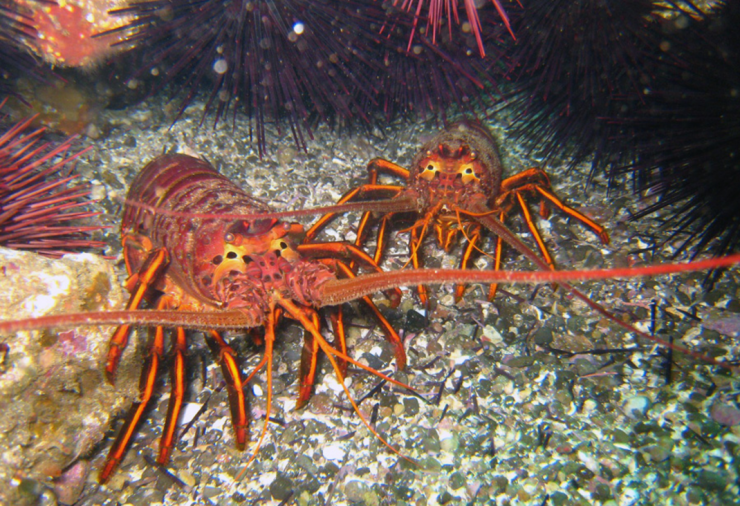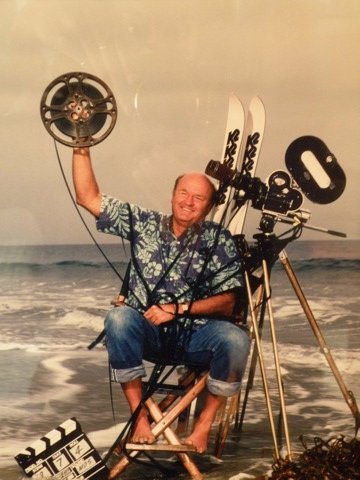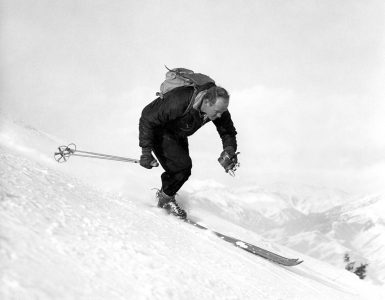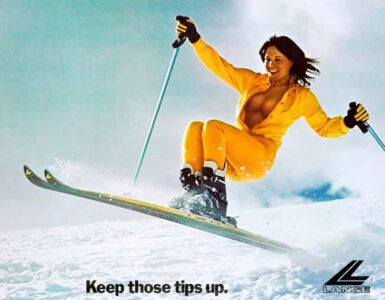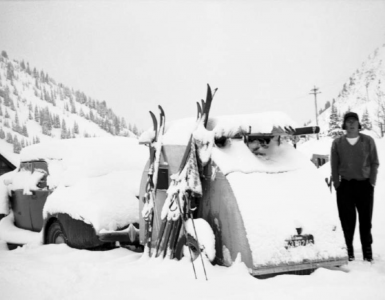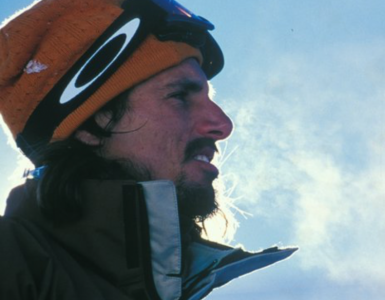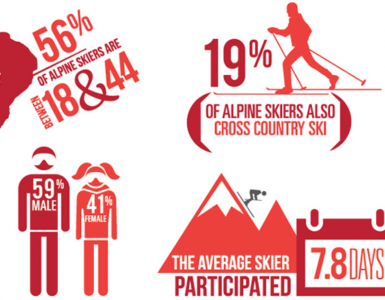By Warren Miller
 There have been a lot of fantastic watermen in my world during the many years I spent riding a surfboard at the Southern California beaches. One of them stands out among all of them because it seemed as though he had suction cups for feet.
There have been a lot of fantastic watermen in my world during the many years I spent riding a surfboard at the Southern California beaches. One of them stands out among all of them because it seemed as though he had suction cups for feet.
I was filming him waterskiing one day and the best footage I got of him was when he was riding on a round sheet of plywood about four feet in diameter with no bindings of any kind. While hanging onto the tow rope with one hand he had a four foot tall wooden bar stool in the other. He was able to balance the bar stool on the sheet of plywood and then climb up the rungs in the stool and then while still being towed, he was then standing barefoot on top of the stool and while balanced there, he was able to do 360 degree spins. This was in the 1950s.
Pete’s next best trick was to tie a rope around his chest and back and while water skiing just dive out between his skis. The young boy who was waterskiing alongside of him would then just step out of one ski at a time and stand on Pete’s back and stand there as though he was riding on an aquaplane which was a four foot by six foot pile of laminated wood that worked like a stiff sheet of plywood with a rope in the front to hang onto. But the aquaplane was Pete.
During the 1930s and 40s Pete Peterson was always able to win any Southern California surfing contest until the invention of the short surf board.
I met up with Pete one morning at 4:15 on his boat to go to Santa Barbara Island to do some underwater photography. By 1958 I was already selling a lot of stock footage from my ski films in an 8mm format so people could then splice my powder snow ski movies in with their home movies of their winter vacation in Aspen or Sun Valley.
Pete and I both thought we could make a couple of bucks selling water skiing and SCUBA diving movies to those same customers and we eventually did.
When we finally got to the island and anchored Pete asked me a simple but obvious question, “Have you ever used SCUBA gear before?” I never had.
“It’s really simple to use,” he said. “All you have to do is put this thing in your mouth and when you get underwater you just inhale and you will breathe air out of this tank on your back.”
In 1950 I had already built my own waterproof box for my new 16mm camera and was to go to work underwater.
Since Pete only had one weight belt on his boat he wrapped about twenty-five feet of anchor chain around my waist and tied it on very securely with one of his dock lines.
After he had put all of my SCUBA gear on my back he said, “Just sit on the rail of the boat, fall over backwards and when you get underwater just inhale and start swimming.”
I tried to do as I was instructed but as I started to sink to the bottom I inhaled and all I got as a mouth full of Santa Barbara Island salt water.
The plan was not going as advertised.
With the heavy weight anchor chain tied very securely to my waist I sunk just like an anchor chain is supposed to sink.
Fortunately the water in which I was sinking was less than twenty feet deep, but not much less and I was able to shove off of the bottom and with my swim fins, get back up to the surface and grab a rope hanging over the edge of the boat. When I got my sputtering and gagging head out of the water to finally breathe, Pete was laughing so hard he almost fell out of the boat on top of me.
It seemed that while Pete was untying the rope holding the anchor chain tight around my waist, he was very concerned that I might drop the chain but not very concerned about his drowning photographer.
After this near death encounter by me we sat on the deck and re-thought this filming expedition. Pete figured that he could grab a dozen or so lobsters and put them in a gunny sack until we motored to Catalina Island which was kind on the way home. He knew a good cave in a rock there that was only about six feet underwater that he could hide the gunny sack full of lobsters. I could stand on the sandy bottom of the Isthmus and with the right camera angles he could swim by the camera and reach in and pull out a fighting lobster from the unseen gunny sack.
We had almost a dozen lobsters in the sack so it was hard for Pete to only pull out one at a time. By the time we were working with number six or seven I was getting some really good underwater shots of catching lobsters in the clear water of the Isthmus.
I managed to shoot four rolls of Kodachrome (almost ten minutes worth) of Pete wrestling with the lobsters underwater.
Now all we needed were some establishing shots of the Isthmus, the anchored boats and a shot of Pete’s boat itself and the wake of the boat on the way home.
My home made waterproof camera box did not leak in the process and since my bookkeeping and record keeping in those days was almost non-existent, I have no idea what I paid Pete for his fuel for the day nor what percentage of the gross sales I gave him. I didn’t even know what that meant back then.
Somewhere in a film vault somewhere is that epic, early 1958 Scuba-equipped lobster dive, somewhere off of the coast of Southern California. Later that evening, Pete and I and his girl friend had a great lobster cook out on the back of his boat when we finally tied up at his dock in San Pedro.
I assumed that Pete had a lobster license because I know I did not. The limit was two lobsters per license and we had twelve. I once again escaped the long arm of the law. Not easily done these days so anyone reading this please don’t do what I did.


